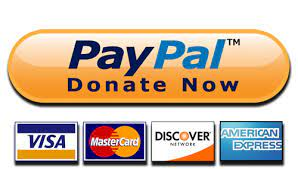
How to Monetize your Browser Extension: 9 Proven Tips to Make Money
Browser extensions make your work easier and quicker. That’s why there is an extension for almost everything under the sun. There are currently over 188 thousand extensions on the Chrome Web Store. Creating a browser extension can be a steady source of income if you monetize it right. In this post, we’ll show you ways to monetize your browser extension.
In this post
What can you find in this post?
How Browser Extensions Make Money?
Digital products help you get more exposure for your brand while generating a revenue stream. Creating a browser extension gives you a product you can market to your current clients and target audience. Since extensions are meant to make work easier and solve problems, they enhance the user experience and build loyalty to your brand.
Generally speaking, extensions make money from selling the extension, adding advertising, or affiliate marketing. The right monetization method will depend on your target audience. Before choosing a monetization method ask yourself these questions:
- What problem does the extension solve?
- How people will use the extension?
- What is the target audience demographics?
- Which browser do they use the most and for what purposes?
Keep in mind that some people may use a browser on their personal devices and another one for work purposes. According to what your extension is for, you should align the extension to the browser your users are on.
Once you know who is your user and how will they use the extension you can plan how to make money from it.
Below you can find some ideas for how to monetize your extension.
How Does Mozilla Make Money?
Maybe you have heard about Mozilla. It is the parent company of the Firefox browser. The company was started in 2003 as an alternative to Microsoft’s Internet Explorer. Having add-ons and extensions was one of the reasons Mozilla had 26% of the browser market in 2008 and, by 2009, surpassed IE as the most popular browser.
Since Mozilla Firefox is open-source and distributed freely, how do they make money?
How Does Firefox Make Money?
Most of the revenue generated by the company comes from search royalties through search partnerships and distribution deals. That means the percentage of advertising profit Mozilla receives when someone uses the built-in search engine. They also earn money through sponsored tab tiles and donations.
For publishers, developing a Firefox add-on can generate revenue through selling advertising space, bundling with other downloads, and more.
How Does Chrome Make Money?
Google’s main source of income is by showing ads on Google’s search results page. For Chrome, Google uses a similar business model to Mozilla Firefox but with a twist. Instead of paying out search royalties, Google transfers the money received from advertisers to the Chrome part of Google. Additionally, Chrome collects user data that is used to target personalized ads.
If you add your extension to Chrome, you can monetize it by adding advertising, offering in-app payments, paid features, and other methods we’ll explore.
So, let’s start. Below you can find some ideas for how to monetize your extension.
Top 9 Tips To Monetize a Chrome or Firefox Extension
If you did your homework, you’ll know by now what browser you should use for your extension. Let’s explore some ideas for extension monetization:
1. Sell Advertising
This is one of the most common ways to monetize your extension. It involves displaying ads when the user uses the extension. You can sell space on your extension. Also, instead o selling space for static ads, you can rotate the ads, maximizing your revenue potential. This enables also them to reach other potential customers.
Display advertising is one of the most common methods to integrate ads into your extension. It includes displaying different types of ads, such as interactive, pop-up, video, and interstitial ads.
If you want to add adverts to your extension, you have two options: you can look for the advertisers yourself or you can sign up for a service. Looking for your own advertisers requires a lot of marketing efforts, negotiating the rates, and type of ads.
A monetization platform like CodeFuel is much easier since it gives you access to a large range of ad networks. The service displays relevant ads according to the user intent, maximizing the chances for conversions. This also increases your opportunity for selling more ads and gain access to high-paying advertisers.
2. Charge for the Extension
Your browser can be a source of income by itself. Charging a small fee for it can generate a lot of income by selling many copies of your extension. While most extensions in the Chrome Store are free, don’t be discouraged. Instead, you can use a freemium.
Freemium is a monetization method where you encourage downloads by offering the extension for free for a period of time. If you want to go this route, you have a couple of options here.
- Offer a free trial of the whole extension for a month or two weeks.
- Offer a free version with limited features
Keep in mind that Google is discontinuing paid Chrome extensions. That means developers can no longer charge for the extensions via Chrome Web Store payments.
3. Offer subscriptions
Instead of charging a one-time fee for your extension, you can offer it for a monthly fee. For this to work you will need to offer more value. For example, the VPN extension I use has a basic free package but if you want full service, you paid the subscription. Other examples are productivity extensions, like Grammarly which offers a basic free service and a premium paid option.
Be sure to include the best premium features into the paid package and improving the extension along the line. This will help justify the subscription expense to the user.
4. In-app payments
With this method, you offer the extension for free but there are certain features you charge for. In this case, the user can choose which feature wants to add. This is very common with gaming extensions that offer in-app purchases.
5. Affiliate marketing
This method is very popular and involves earning a commission by promoting other companies’ products. Extensions can display banners or ads that direct the user to the advertiser’s product or landing page. You get paid a commission when a user completes a purchase using the link displayed in your extension.
Although popular, this method can put off users if the banners are not related to the extension’s features. Displaying contextual ads can solve this problem. Since they blend with the extension, they enhance the user experience rather than interrupting it.
6. Paid features
You can offer your extension for free and reserve some features to sell individually. That way your users can purchase. If you are working with a donation scheme, you can unlock certain features after the user donated a certain amount via PayPal.
7. Search advertising
This strategy places ads on search engine results. Search advertising is not interruption marketing, therefore is less intrusive for the user experience. Search ads can be customized according to user intent, thus the ads are relevant to what they are searching for.
How does this work for an extension? This is one of the most popular methods for monetizing extensions since it generates revenue while enhancing the user experience.
8. Bundling
When users download your browser extension, you can take advantage and offer related apps or other software. If you have several apps, you can promote your own products to increase your sales. You can also promote other companies’ applications. In this case, you can charge a flat fee for advertisements or a commission for every download.
Ensure the products you bundle relate to your extension, so they increase the value of the offering. Besides being selective, don’t overwhelm your users with more than a few apps. More than three would be too many.
9. Ask for donations
Donation is a strategy that has become popular in the last few years. While not what you typically expect from monetizing, it can be effective. Asking for donations gives your customers the choice to pay for your extension. Sure, you risk giving away the extension for free.
In reality, when people have the choice to make a donation, they tend not only to pay but pay more than the minimum. That’s why asking for donations appeals to people’s emotions. Asking for donations may not make millions of dollars in revenue, but you can have extra money while increasing your exposure.
Optimize your Extension Monetization with CodeFuel
CodeFuel is a complete monetization platform that offers intent-based monetization for your digital properties, including app, search engine, or browser extension. By leveraging the power of search monetization, your users get served shopping and text ads customized according to their intent. It works with large ad networks including Bing and Google AdSense.
The free platform has an easy setup and integrates smoothly with existing software. You can keep your monetization efforts on track with our BI and detailed reports. Start monetizing the smart way with CodeFuel today.








